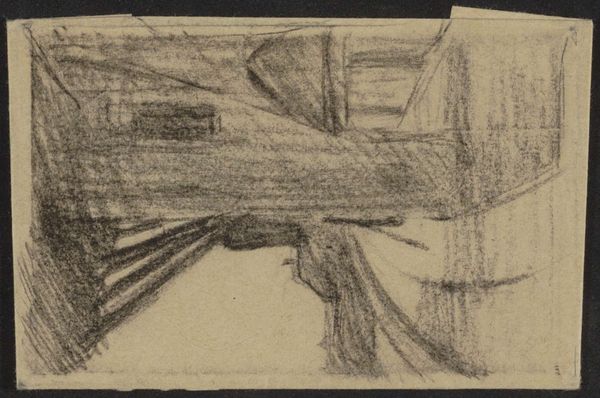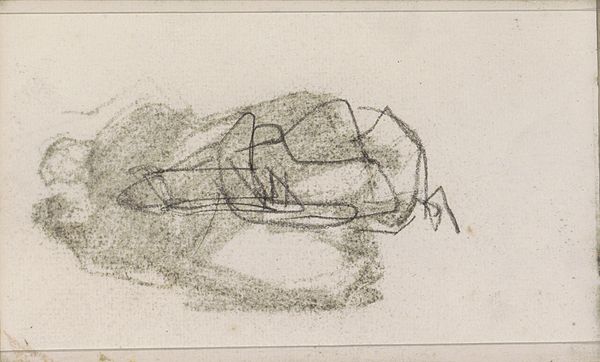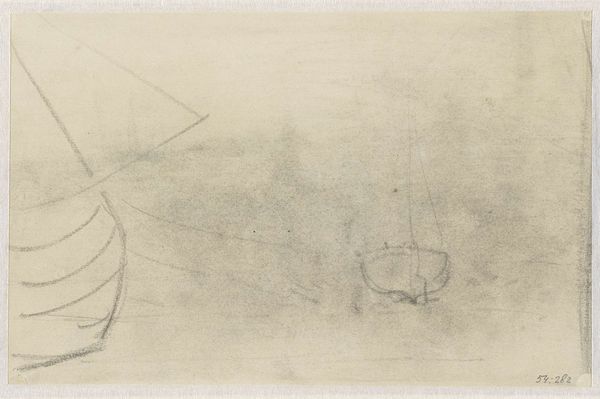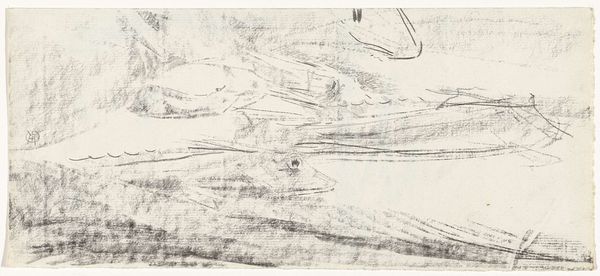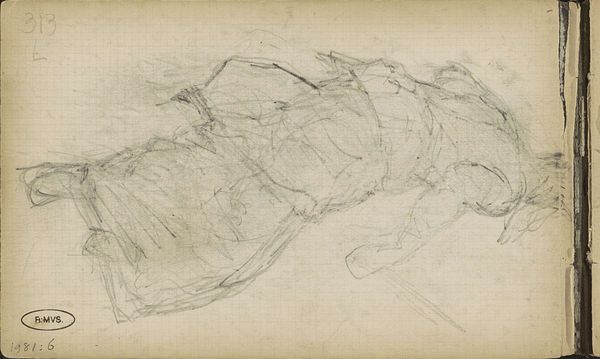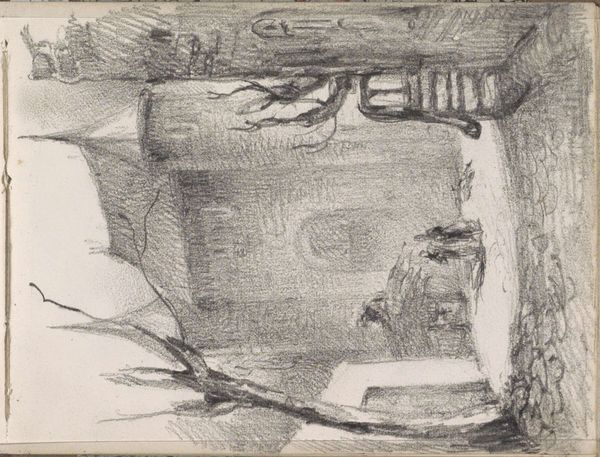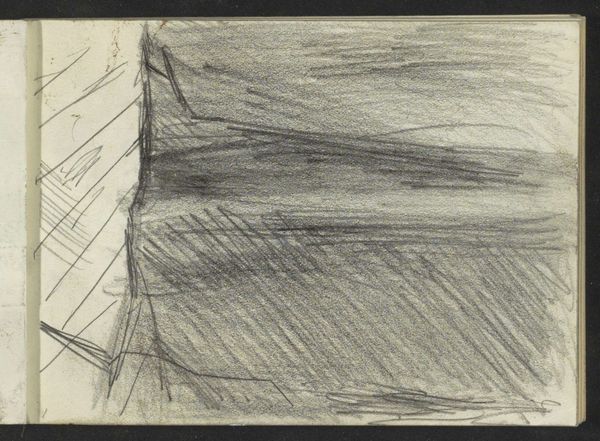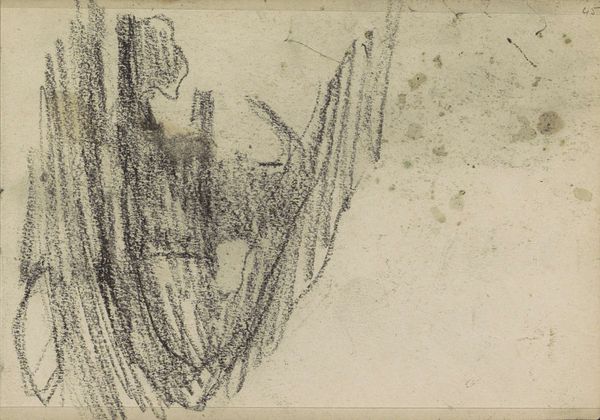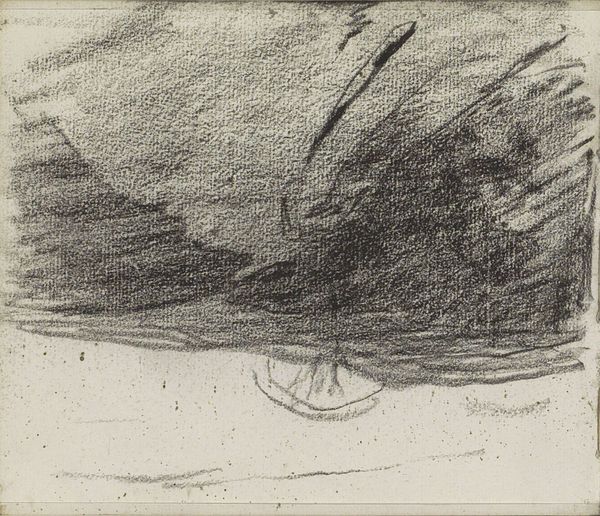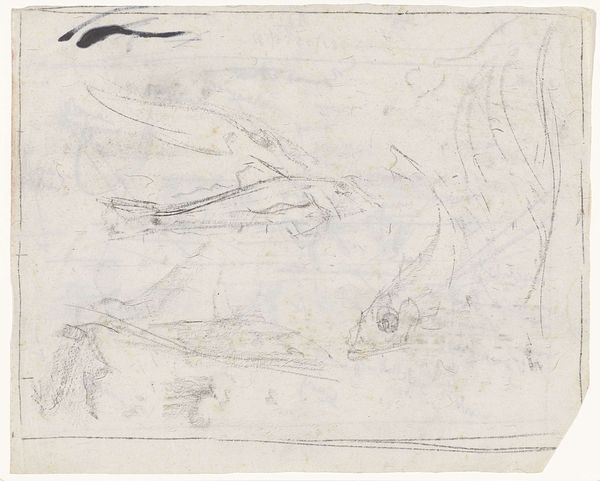
drawing, paper, pencil
#
drawing
#
paper
#
coloured pencil
#
geometric
#
pencil
#
abstraction
Dimensions: 101 mm (height) x 168 mm (width) (bladmaal)
Editor: So this is Niels Larsen Stevns' "Kirkeinteriør," made around 1896, using pencil and colored pencil on paper. It's very abstract; almost more a feeling of a church than a literal depiction. How do you interpret this piece, knowing it’s in the Statens Museum for Kunst? Curator: It strikes me as a study of the institution of the church, more than the building itself. The abstraction removes it from the specifics of a particular church, allowing it to stand in for the broader idea of religious space and its power. Think about the late 19th century in Europe: the growing secularism, the challenges to religious authority... This drawing might be a reflection of that changing societal landscape. Do you see how the stark geometry could suggest a coldness or a feeling of detachment? Editor: I hadn’t thought of it that way; I was just seeing the sketchiness as, well, just a sketch! But thinking about secularism makes sense. What’s with the colored pencil then? Curator: Interesting point. Colored pencil, at this stage, could represent the fading color, or perhaps the artificiality, of established religion. Was Stevns perhaps questioning the vibrancy and relevance of the church in modern life? Consider its placement within the Statens Museum for Kunst – a secular, state-funded institution. That placement also contributes to how we understand its meaning today. Editor: That's fascinating! It makes me consider how even a seemingly simple drawing can carry so much cultural weight. Curator: Exactly! Art doesn't exist in a vacuum. Considering the social and institutional context is key to understanding its many possible meanings. Editor: I’ll definitely remember to consider the "who, what, where, and when" next time I encounter something like this! Thank you.
Comments
No comments
Be the first to comment and join the conversation on the ultimate creative platform.

